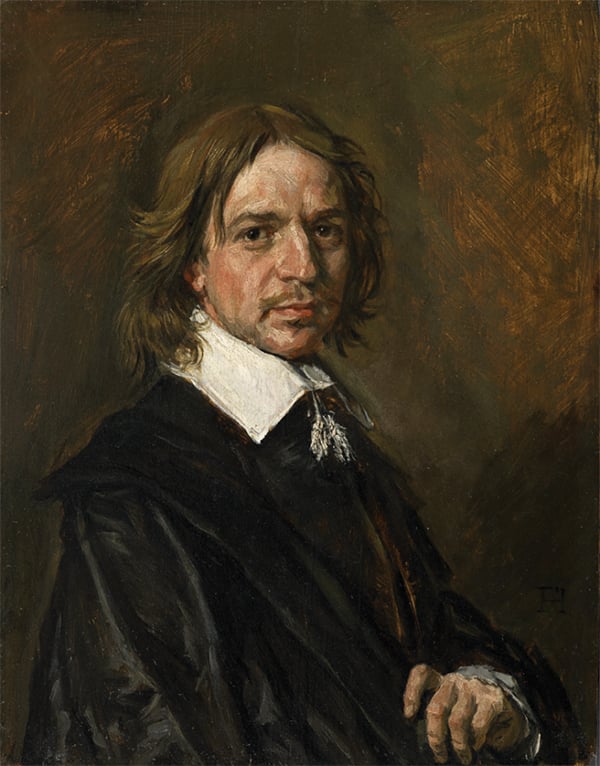From artnet:
Can we still count on the judgment of experts?

Franz Hals, Portrait of a Man, one of a series of Old Master works sold by a French dealer that authorities now believe may be forgeries.
More details have come to light regarding a suspected Old Mastery forgery scandal that may encompass some €200 million ($255 million) in fake canvases. It would appear that some of the world’s foremost experts on authentication have been taken in, casting doubt on connoisseurship and forensic analysis alike.
The most recent development has Sotheby’s refunding the buyer from a 2011 sale of a purported Frans Hals portrait. The authenticity of that painting was called into question because it came from the same source as a Lucas Cranach the Elder Venus, after the latter was seized by French authorities earlier this year under suspicion it was fake. Little-known French collector-turned-dealer Giulano Ruffini, who was the original seller of both works, has brought to market a suspiciously high number of previously undocumented works attributed to Old Masters.
Related: String of Suspected Old Master Fakes May Reveal ‘Biggest Art Scandal in a Century’
The Hals refund is all the more concerning given how much press the painting received as a newly discovered treasure in the immediate past. In 2008, the Louvre launched a national campaign to buy the canvas for €5 million from Christie’s Paris, declaring it “un trésor national.” The Parisian museum wasn’t acting lightly: the painting had been authenticated after passing a battery of scientific tests conducted by France’s Center for Research and Restoration. At the time, Burlington Magazine called the work “a very important addition to Hals’s oeuvre.”
Though the Louvre’s efforts to secure the work were stymied by the 2008 financial crisis, the painting eventually passed into the hands of London dealer Mark Weiss for just €3 million. He then arranged for a $10 million private sale through Sotheby’s to an American collector—an almost 150 percent profit, the Art Market Monitor points out.
Nevertheless, it now seems clear the Hals painting’s total lack of provenance should have remained a red flag. This year, concerned by evidence against the Cranach, Sotheby’s turned to Orion Analytical, a Williamstown, Massachusetts-based company which investigates artworks and other cultural property, working with law enforcement to unveil forgeries. New tests found traces of synthetic 20th-century materials during its testing of the painting.
“Orion’s peer-reviewed analyses showed the presence of modern materials used in the painting in a way that meant that it could not have been painted in the 17th century,” said Sotheby’s in a statement....MORE